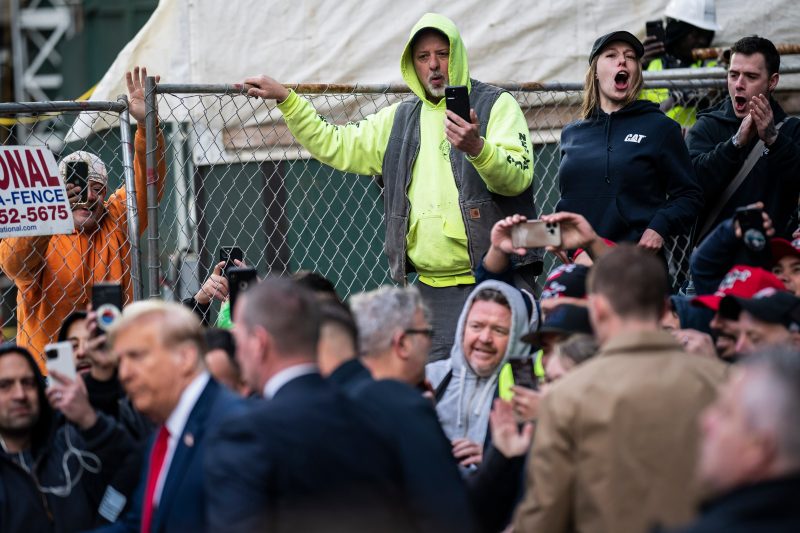In recent years, there has been a growing interest in the role of union members in political movements and elections. With their large numbers and potential influence, union members are often seen as a key demographic for politicians to win over. This is particularly true in the case of President Donald Trump, who has sought to tap into their support while complicating his relationship with unions.
One of the main issues that have complicated Trump’s appeal to union members is his stance on trade and tariffs. Trump’s aggressive trade policies, including imposing tariffs on foreign imports, have been met with mixed reactions from union leaders and members. While some have praised his efforts to protect American industries and workers, others have criticized the tariffs for causing economic hardship and leading to job losses.
Another factor that has made it challenging for Trump to win over union members is his approach to labor rights and regulations. Despite portraying himself as a champion of the working class, Trump has rolled back several labor protections and made it more difficult for unions to organize and negotiate on behalf of their members. This has created a sense of distrust and animosity among some union members, who feel that their interests are not being prioritized by the administration.
Furthermore, Trump’s divisive rhetoric and controversial statements have also alienated many union members. His attacks on immigrants, racial minorities, and women have been met with widespread condemnation, causing discomfort and unease within union ranks. This has led to a significant portion of union members distancing themselves from Trump and his political agenda.
Despite these challenges, Trump has managed to maintain some level of support among certain union members, particularly those in industries that have benefited from his policies, such as manufacturing and construction. His promises of job creation and economic growth have resonated with some workers, leading them to overlook his shortcomings in other areas.
In conclusion, union members could indeed be a significant factor for Trump in upcoming elections. However, his complicated relationship with unions, stemming from his trade policies, labor regulations, and divisive rhetoric, poses a significant challenge to winning over this crucial demographic. Whether Trump can effectively navigate these issues and appeal to union members remains to be seen, but it is clear that their support will play a crucial role in shaping the political landscape in the years to come.
